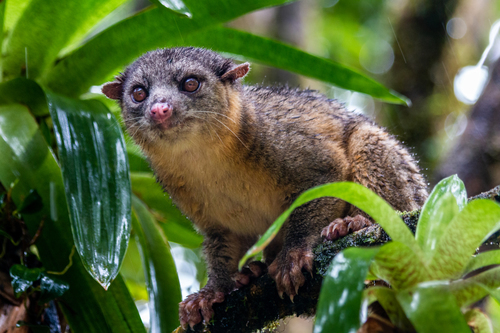
Olingo
The enigmatic olingo, Bassaricyon gabbii, roams the lush rainforests by night. With its prehensile tail and keen night vision, this frugivorous mammal exemplifies arboreal agility. Its role as a seed disperser highlights its ecological importance, weaving a critical thread in the forest's vibrant tapestry.
25 in
Lifespan
1.18 - 1.41 kg
Weight
Length: 36 - 51 cm
Size
Brown, Grey, Red, White, Multi-colored
Color
21-24 months
Age of Sexual Maturity
Low
Aggression
Least Concern
Conservation Status
Decreasing
Population Trend
Characteristics
Bassaricyon gabbii, commonly known as the olingo, inhabits the tropical forests of Central and South America. A nocturnal and arboreal mammal, it has a slender body, a prehensile tail, and large eyes adapted for night vision. It primarily feeds on fruits, nectar, and small animals.
Distribution Range of the Olingo
Bassaricyon gabbii, commonly known as the olingo, is native to Central and South America. Its geographical distribution includes countries such as Nicaragua, Costa Rica, Panama, Colombia, Ecuador, and possibly into Venezuela.
Olingo's Habitat
Environmental Conditions
The olingo typically inhabits tropical and subtropical forests. These environments are characterized by high humidity, abundant rainfall, and warm temperatures. The species is often found in lowland and montane forests, ranging from sea level up to about 2,000 meters in elevation.
Ecological Niche
Bassaricyon gabbii is primarily arboreal, spending most of its life in the forest canopy. It is nocturnal and omnivorous, feeding on a diet of fruits, nectar, and small animals. The olingo plays a role in seed dispersal due to its fruit consumption, contributing to the ecological dynamics of its forest habitat.
Copyright @ Nature Style Limited. All Rights Reserved.
 English
English